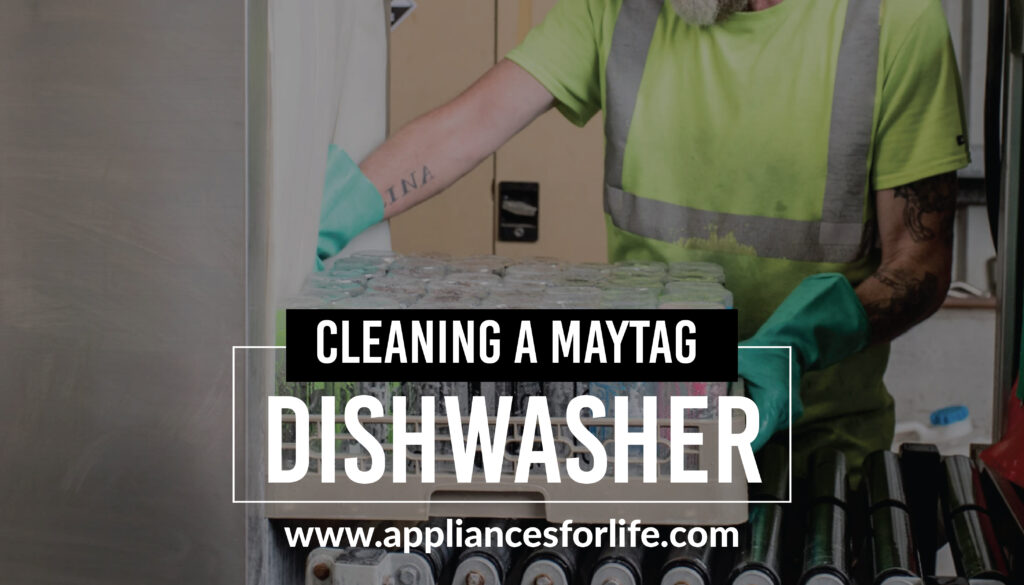- Dishwashers are considered by some to be an unnecessary luxury but this opinion is usually held by those who have had no course to wash in large quantities, those whose schedules aren’t so busy, and those who probably have not just used a dishwasher before. But the necessity of a dishwasher is manifestly seen in how sparkling it makes dishes. Apart from the cleaning ability of a dishwasher, its heating system leaves your dishes completely sanitized.
- Dishwashers are indeed a necessary technology of our time. Users who use it without any abuse will testify to this. Emphasis on the phrase ‘without abuse’ implies that your satisfaction with the use of your dishwasher depends largely on how you care for it and how often you do the same. Dishwashers are great and they will certainly make your dishes come out great if you keep them clean. This article explores some of the dangers encountered as a result of failure to keep a clean dishwasher and further profers a step-by-step procedure to get a dishwasher clean.
Maytag Dishwashers Working Cycles
Table of Contents
ToggleThere is no doubt that handwashing is a tedious task, especially if it is being done in large quantity. Hand-washing does not only prove difficult, it is also time-consuming. Scrubbing through every inch of other kitchenware like knives can also be dangerous when it has to be done manually with bare hands and within a limited time. You will most likely encounter a long list of pain points if you are to reel out the defects of hand-washing. However, hand-washing is no longer necessary, thanks to the invention of modern dishwashers. Since the invention of dishwashers, several brands including Maytag Incorporations have built very efficient dishwashers. Dishwashers have been built in a specific way for them to make your dishes sparkling clean without any bother. The washing cycles of Maytag dishwashers will now be discussed below. However, before we proceed, it is important to note that needs to be cared for, for optimal functioning. Not only is it necessary to clean it, but it is also almost crucial to note that there is a long list of items that should never be placed in a dishwasher.
The elements of an effective dishwashing
There are three elements to dishwashing that makes it so effective at leaving dishes bright and shiny. Without the combination of these components, your dishes may be found unclean even after washing, exposing you to possible infections. Dishwashers combine detergent, wash systems, and heat to help your dishes come out clean. For a heavy-duty clean that adds steam, check out the PowerBlast cycle by the Maytag brand. These elements include the following;
- Detergent: A combination of cleaning agents is necessarily dispensed at the appropriate time while the dishwasher works in order to facilitate stain remover.
- Wash System: Water is recirculated through spray arms, washing away food and soils. These soils are collected by filters to prevent them from being redeposited on the load and then disposed of through the drain system.
- Heat: The heating system at the bottom of the dishwasher is there to heat up water supplied to the machine for washing. The heating process creates optimized conditions for the detergent to break down food.
Detergent
A dishwasher detergent is an important dishwashing component dispensed during the wash. A dishwashing detergent is a combination of chemical components that help remove food particles and residue easily. Note that detergents also include water softeners anti-corrosion chemicals and enzymes that help boost wash performance and this is why it is strongly advised that one sticks to dishwashing detergents for effective dishwashing. When you use the wrong detergent, you may discover some unwanted results after dishes are done washing. Water is optimally dispensed by the dishwasher in order to rinse off soap after washing is done if soap on the dishes happens to be too concentrated, there is a possibility that some suds are still left on the dishes even after rinsing may have been completed. Also, when you do not use the appropriate dishwashing detergent, are likely to have unclean dishes in your hands.
Though often overlooked, rinse aid is also an essential part of dry dishes, while also reducing leftover spots and white residue. If you’ve ever been frustrated by the dried water droplets that sometimes form on your glassware, the use of a rinse aid can help prevent this problem.
Wash System
This is the stage where actual dishwashing occurs. The dishwasher water pumps are effectively utilized here, the dishwasher’s pump will force water into the water jets. These water jets are connected to the spray arms which have been strategically fitted in every corner of the dishwasher. When these sprays are supplied with water, they will rotate as they blast water throughout the tub to remove food particles from your dishes. The removed particles are trapped by the dishwasher filter, while the dirty water used for washing is passed out through the drain hose and into your garbage disposer and/or your home’s waste system.
Heat
Heat is necessary, not only for complete cleansing and stubborn stain removal, but it is also crucial for the effective sanitization of your dishes. Most dishwashers have a built-in heating element located at the base of the dishwasher. When water is supplied to the dishwasher, the heating gets to work and heats it up. This heating can get to temperatures upwards of 155ºF–hotter than the hot water from the faucet.
You are probably wondering what effect hot water gives to your dishes- Well, hot water helps break down food particles attached to the surface of your dishes, and this is the reason some dishwashers supply warm water at the beginning of their wash cycles in order to break down food particles or softens it before the actual washing then commences. Heated washing also helps with detergent breakdown, creating a perfect solution for effective washing. Lastly, hot washing is key to sanitizing your dishes. It is strongly advised that dishes are cleaned with hot water so that germs are easily eradicated.
Maytag Dishwashing tip
Stick to detergent in the dishwasher—it’s specially formulated to activate with the high heat and dynamic wash action of your dishwasher. Don’t use dish soap–it creates suds that help when handwashing but may leak out of the dishwasher. Regular dish soap also hurts the wash performance of a dishwasher, since the foam generated cannot be pumped out so water can no longer be recirculated.
How long do Maytag Dishwashers run?
Maytag dishwashers typically come with a mechanism that controls how long the dishwasher runs. They do this by first detecting how much soil is present on those dishes, through their built-in sensors. Once the machine is aware of how dirty your dishes are, it can then determine the quantity of water to be supplied for effective washing.
Most dishwashers have a “quick wash” that will run 30 to 60 minutes, a typical “normal” cycle that runs about 90 to 120 minutes and a “heavy-duty” cycle that can last up to four hours. Some options, like heated dry, add time so check your settings if you want a shorter wash. Your home and hot water heater temperatures can significantly alter run time.
The Dangers of not Cleaning your Dishwasher
A dishwasher is a very useful addition to the kitchen. For those who wash dishes in large quantities and for those with busy schedules, the dishwasher is indeed cherished. The reason for this phenomenon is not far-fetched, dishwashers can save you a lot of wash time and give you even better results. However, if your dishwasher is not maintained and cleaned regularly, you may soon return to washing your dishes with your hands because your dishwasher may encounter inevitable damage.
Although it seems slightly counterintuitive to assume that dishwashers need cleaning since their primary function is to make dishes clean. We may think that since water constantly runs through a dishwasher then there is no chance it is dirty but these thoughts may be wrong because dishwasher filters are left dirty every now and then after every wash.
We know that cleaning a Maytag Dishwasher is not that easy, as it requires proper techniques. But after learning how to clean a Maytag Dishwasher, you will no longer face difficulty cleaning it. Do not worry if you have never cleaned the Maytag Dishwasher before.
Most people use their dishwashers regularly, some even use them every day and as result, regular cleaning is necessary to keep the machine in an optimum working condition. After every use of a dishwasher, you will find food residue stuck on the filter and in between the wash arms, if dirt like this remained, the dishwasher may become really dirty and smelly, hence, negatively affecting the state of your dishes. This could even lead to worse problems affecting the dishwasher.
The dishwasher also stands the risk of being clogged as a result of a regular deposit of food particles at its base of it. When the dishwasher is clogged in this manner, it may become very difficult to drain dirty water from the washer. Due to the clogging in the drainpipe, you may need help from professionals to clean it. Or you may have to get your drainpipe or strainer replaced. If you do not want to face these problems in your dishwasher, learn how to clean Maytag Dishwasher.
General Cleaning of a Maytag Dishwasher
The need for cleaning a dishwasher cannot be emphasized enough because it is necessary, to maintain healthy living while you do your dishes. You can generally clean your dishwasher by first inspecting it through and through to uncover the corners where dirt may be lurking. This inspection helps you detect areas that need concentrated cleaning and it also helps you determine the kind of cleaning that applies to a particular area of the washer.
You can run a general cleaning of your dishwasher by using bleach or baking soda to get rid of some seemingly indelible stains on the body of the washer. You can wipe the body of your washer through and through with a cloth damped in bleach or baking soda. You can also clean the inside of your dishwasher by using Vinegar. Firstly, remove all the dishes from the dishwasher and take a small amount of vinegar. Place the vinegar on the upper rack of the dishwasher. Then, start cleaning the dishwasher using a hot water cycle.
After the end of the cycle, you will notice that your Maytag Dishwasher is no longer greasy and smelly. If you feel that your Maytag Dishwasher is stinking, then also you can do the same to remove the smell. If your dishes come out dirty even after this thorough cleaning, then it may be time to get a replacement for your dishwasher.
Cleaning a Dishwasher Filter
The dishwasher filter is the component of the dishwasher that filters out food particles from the water. it constantly holds a lot of dirt and that is why it is important to specially clean it.
Step 1: FIND & REMOVE YOUR DISHWASHER FILTER
To access the dishwasher filter, remove your lower dish rack to uncover the bottom of the dishwasher. The filter is located in the back corner of the tub bottom, or around the base of the bottom spray arm. When you remove the filter, make sure to do this carefully as a damaged filter can affect the dishwasher so that it stops working.
And for the dishwashers that have a triple filter system with two parts: Give the upper filter a quarter-turn counterclockwise and take it out. Gently remove the lower filter by lifting it slightly, then pulling it forward to take it out as well.
Step 2: CLEAN YOUR THE FILTER
To clean the dishwasher filter, begin by rinsing it under the faucet with warm water to remove soils and residue that may have stuck to the holes on the filter. if the particles do not get off easily, soak the filter in warm water for a few minutes.
Look out for calcium deposits and other stuck-on bits. Those may require gentle scrubbing with a soft brush, sponge, or an old toothbrush to get clean.
Step 3: REINSTALL YOUR DISHWASHER FILTER
Once the filter is clean, reinstall it in your dishwasher.
- Return your lower filter to the bottom of the dishwasher tub, locating it properly under the tabs, so that the upper filter will line up with the round opening in the tub bottom.
- Place the upper filter on top of the lower filter
- Turn the filter clockwise and let it drop into position and make sure it is properly fitted
- Avoid damaging your dishwasher by ensuring that both the lower and upper filter assemblies are returned to the locked position before running.
FAQs
How often should you clean my dishwasher?
This depends on how frequently you are using your dishwasher but it is important you clean your filter as often as once every week. In addition to this, you can help keep your dishwasher performing at its peak by cleaning your dishwasher every three to six months.
When should I clean my filter?
Generally, you should clean your dishwasher filter when you notice soil or other residues on the upper filter assembly. You should also clean your filter when the cleaning performance of your dishwasher has declined. Hence, when you notice that grease and soil remain on your dishes even after washing then it is time to wash the filter.
How do I clean my Maytag dishwasher with Bleach?
If your dishwasher has mold or mildew, washing with bleach can be the solution to this problem. Add a cup of bleach to the bottom of the machine and start a full washing cycle. This will eliminate those tough stains and mold components.
22 MINUTES
ESTIMATED TIME DESIGNING AND UPLOADING THIS ARTICLE
10 HOURS 26 MINUTES
ESTIMATED TIME RESEARCHING AND WRITING THIS ARTICLE
You Might Also Like

Pros and Cons of Juicing vs Blending
Blenders quickly amassed a lot of popularity when people began to realize how much they could help over their overall health statuses. The same can be said of juicers, but unfortunately, they don’t enjoy the same popularity blenders enjoy because, although they function similarly, blenders

How to Remove Heat Stains From Stainless Steel Cooktop
As well all know, stainless steel is one of the most durable metals you can ever get your hands on. This is why stainless steel appliances are so popular and that includes your stainless steel as well. In this article, we’ll be discussing how to

Top 3 Best Crosley Professional Refrigerators
You won’t know how good Crosley refrigerators are until you invest in one. If you’re considering getting a Crosley professional refrigerator, our review of the best Crosley professional refrigerators will help you make the best decision. Getting a good refrigerator is a big deal, and

How to Fix a Leaky Washing Machine?
Regarded as one of the most important household appliances of the 21st century, the washing machine has amassed so much popularity in the past few years. If you have a dripping washing machine in your laundry room, knowing how to fix a leaky washing machine

Black Stainless Steel Frigidaire Dishwasher Review
Black stainless steel dishwashers are fast becoming very popular, thanks to their sleek and beautiful designs. If you’ve been looking to explore your options on the market for a new dishwasher, you will find our black stainless steel Frigidaire dishwasher review particularly helpful. Kitchen appliances

Electric Tankless Water Heaters For A Small House
Best Electric Tankless Water Heaters For A Small House Not all tankless water heaters are created equal. If you have a small home, you’ll want to ensure you get an electric tankless water heater specifically designed for small homes. This article will review the 7

Top 3 Best Handheld Vacuum Sealers for Mason Jars
People may use different methods to preserve their food, but all methods are practiced to achieve a common goal, which is to keep the food fresh for a longer period. Over the past few years, vacuum sealers have played an important role in food preservation,

KitchenAid Hand Mixer Not Working
The KitchenAid brand has been making a positive difference in the blender/mixer market. Our KitchenAid mixer troubleshooting guide will keep you well informed on how to tackle any mixer issue your KitchenAid hand mixer is not working. If you ask anyone what appliance they use

9 Best ACs and Marnur Portable Air Conditioner To Cool You Down
MARNUR Portable Air Conditioner is manufactured by a reputable brand that offers competitive and budget-friendly AC units. If you are looking for a sleek, energy-efficient AC at an affordable price then look no further than the LG LW6019ER 6,000 BTU Window Air Conditioner. The GE

Top 4 Best Washing Machines for Comforters
Domestic washing machines are more robust than most people think. If you’re looking for the best washing machines for comforters, we’ll be reviewing the best washers for comforters in this article. Top 4 Best Washing Machines For Comforters Comparison Table Since they introduced residential

